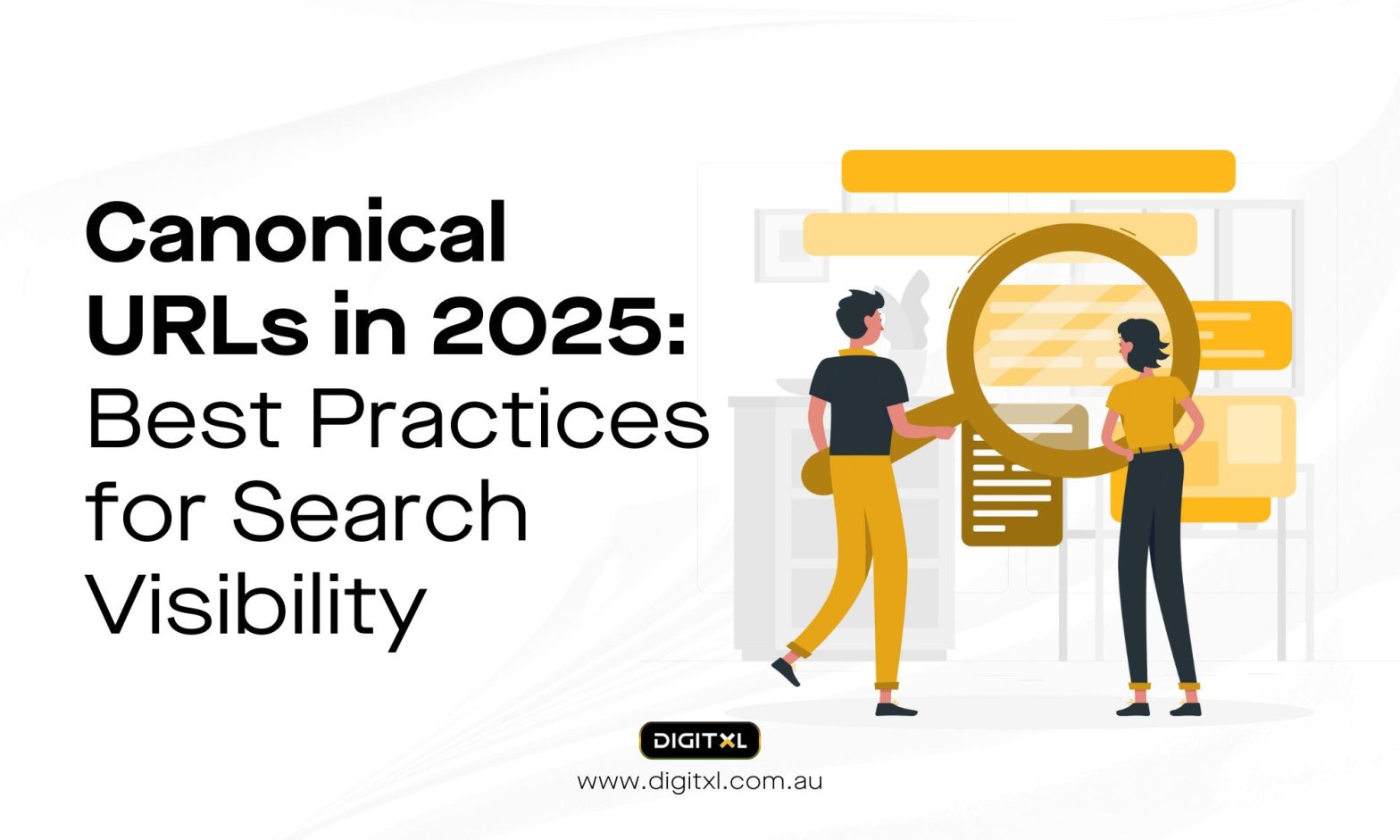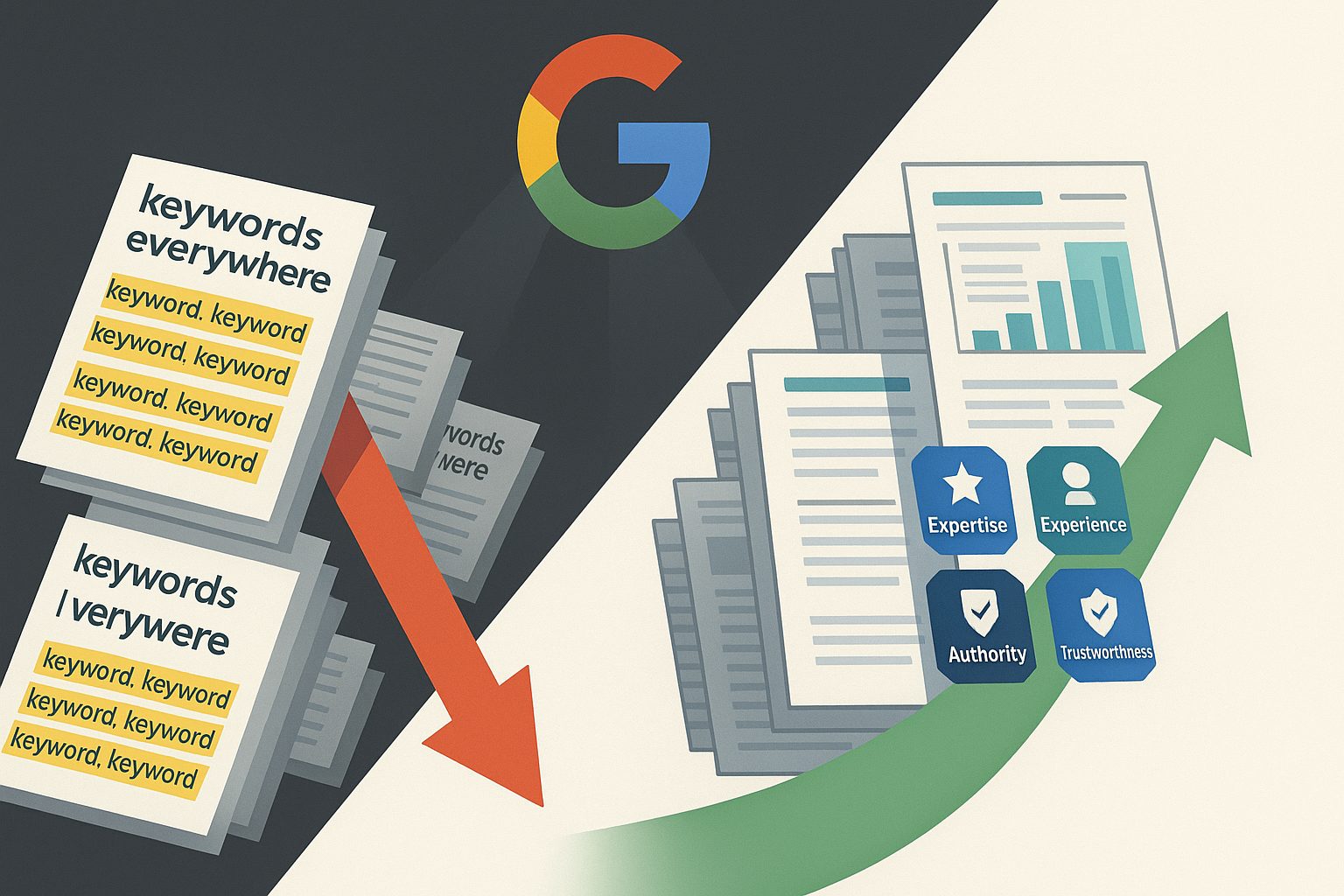- SEO
Canonical URLs in 2025: Best Practices for Search Visibility
08 Oct 2025
What is a Canonical URL?
In web development and on-page SEO, the term “Canonical URL” might sound a bit technical, but it plays a crucial role in improving your website’s organic traffic and protecting your site from duplicate content penalties in the SERPs.
If you’ve ever been told that duplicate content can damage your SEO performance, canonical URLs are your go-to solution. In this article, we’ll explain what a canonical URL is, why it’s essential for SEO, and how to implement it correctly on your website. Whether you’re a business owner, in-house marketer, or working with an SEO agency, getting this right is non-negotiable.
1. What Is a Canonical URL?
A canonical URL is the preferred version of a web page when multiple pages have identical or very similar content. For example, if your product or content is accessible via multiple URLs (due to parameters, categories, or session IDs), the canonical tag tells search engines which version to treat as the original source.
Example:
A red t-shirt product page might be available under these URLs:
- https://example.com/red-t-shirt
- https://example.com/red-t-shirt?color=red
- https://example.com/t-shirts?product=123
Although they all show the same product, search engines might see them as separate pages, causing SEO issues.
To avoid this, you use the canonical tag to tell search engines that https://example.com/red-t-shirt is the original page.
2. How Canonical Tags Work
You insert the canonical tag in the HTML <head> section like this:
<link rel=”canonical” href=”https://example.com/red-t-shirt” />
This tells Google and other search engines that this URL is the preferred version for indexing and ranking.
3. Why Are Canonical URLs Important for SEO?
1. Avoid Duplicate Content Issues
Duplicate content can harm your rankings. Canonical URLs consolidate similar pages, so search engines index the right one, improving your organic visibility.
2. Consolidate Link Equity
When duplicate pages receive backlinks, their Ranking Power/ Link Juice is split. A canonical tag consolidates that power to the preferred page, helping it rank better in SERPs.
3. Improve User Experience
Users often get confused when they see different URLs with the same content. Canonical URLs ensure they always land on the correct version.
4. Avoid Penalties
Google may devalue or even penalise websites with excessive duplicate content. A canonical tag helps you stay in the safe zone.
E-commerce Canonical URL Example
In e-commerce websites, products often appear under multiple categories or collections, leading to duplicate URLs.
Scenario:
You sell a pair of blue jeans, and the product is accessible via:
- https://example.com/collection/product/blue-jeans (category-based URL)
- https://example.com/product/blue-jeans (clean, canonical URL)
Both URLs show the same product, but search engines treat them as different pages. This creates duplicate content and dilutes SEO value.
Solution:
Add a canonical tag to the collection-based URL:
<link rel=”canonical” href=”https://example.com/product/blue-jeans” />
This tells search engines to treat the clean product URL as the main version, consolidating all ranking signals and improving organic traffic and avoiding content duplication for your store.
Pro Tip for SEO Agencies:
If you’re an SEO agency managing e-commerce clients on Shopify, WooCommerce, or Magento, ensure canonical tags are dynamically generated for every product that appears in multiple paths.
4. When Should You Use Canonical URLs?
You should use canonical tags in the following scenarios:
- Product pages with multiple URL variations (e.g., color or size filters)
- Blog categories or tags that create duplicate content
- UTM or tracking parameters from marketing campaigns
- Paginated content (e.g., page=2, page=3)
- Session IDs in e-commerce URLs
This is especially important for SEO agencies providing SEO services to growing businesses with large websites.
5. Common Mistakes with Canonical URLs
This update reinforced that good content needs a strong technical foundation.
- Content Clustering: Create hub pages supported by related subpages. (e.g., “Digital Marketing Guide 2025” linking to “Email Automation” or “GA4 Reporting.”)
- Schema Markup Evolution: Beyond Article and FAQ include Author, Review, and How-To schema.
- Core Web Vitals Expanded:
- Interaction readiness (can users act quickly?)
- Content stability (no layout shifts from ads/pop-ups)
- Navigation clarity (menus and breadcrumbs must be intuitive).
Sites with heavy JavaScript or confusing structures risk losing visibility.

6. Best Practices for Canonical URL Implementation
- Always use absolute URLs
- Check for canonical tag presence on all relevant pages
- Avoid mixing canonical tags with redirects
- Use for paginated blog posts or category archives
- Don’t use canonical tags to deindex pages use noindex or redirects instead
7. Tools to Monitor Canonical URLs
- Google Search Console – See how Google indexes your pages
- Screaming Frog SEO Spider – Crawl your site for duplicate content and canonical errors
- Ahrefs & SEMrush – Audit canonical issues and track on-page SEO performance
8. Conclusion
Canonical URLs are a must-have element of technical SEO and on-page optimisation. Whether you’re an SEO agency managing complex sites or a business owner improving your site’s SEO, canonical tags help keep your site clean, structured, and optimised for better SERP performance.
9. Call to Action
Are you using canonical URLs properly on your website?
If not, it’s time to review and optimise. Contact DIGITXL for expert SEO services and let us help you increase your organic traffic and dominate the search results.
10. FAQ
1. What is a Canonical URL in SEO?
A. A Canonical URL is the preferred version of a webpage when multiple URLs have similar or identical content. It tells search engines which page to treat as the original source, helping to avoid duplicate content issues and consolidating SEO value.
2. Why are Canonical URLs Important for SEO?
A. Canonical URLs help:
- Avoid Duplicate Content: Prevents search engines from indexing multiple versions of the same content.
- Consolidate Link Equity: Ensures that backlinks point to the preferred page, strengthening its SEO power.
- Improve User Experience: Prevents confusion when users land on duplicate pages.
- Avoid Penalties: Keeps your site safe from Google penalties for duplicate content.
3. How Do I Implement a Canonical URL on My Website?
A. You can implement a Canonical URL by adding the canonical tag in the <head> section of the page’s HTML. For example: link rel section “canonical” url “https://example.com/your-page”. This tells search engines to treat the linked URL as the original source, consolidating all SEO benefits to that page.
4. When Should I Use Canonical URLs?
A. Canonical tags are essential in the following situations:
- When there are multiple URLs for the same product or page (e.g., with different filters, session IDs, or UTM parameters).
- For paginated content or category archives.
- On e-commerce sites where the same product appears under different URLs (e.g., category-based or clean URLs).
5. What Are Common Mistakes with Canonical URLs?
A. Some common mistakes include:
- Pointing to the wrong canonical URL.
- Failing to use canonical tags on all relevant duplicate pages.
- Using relative URLs instead of absolute ones.
- Creating canonical loops or chains, where one page points to another, causing confusion for search engines.





